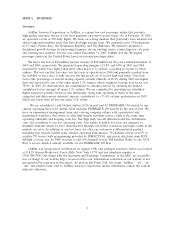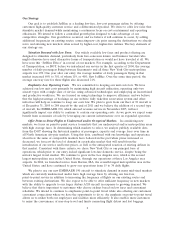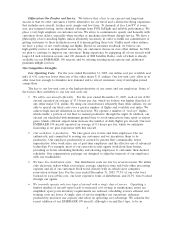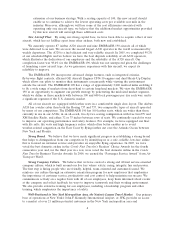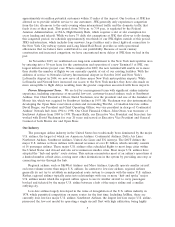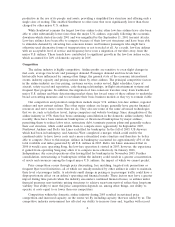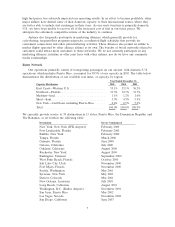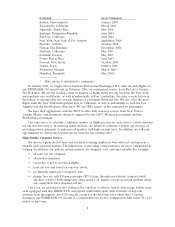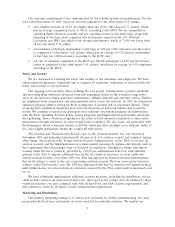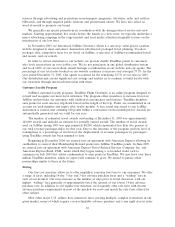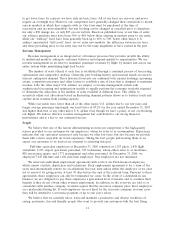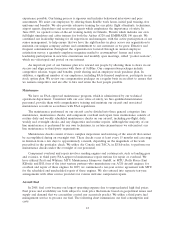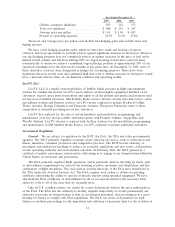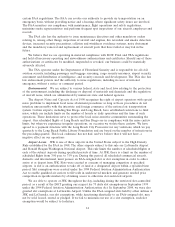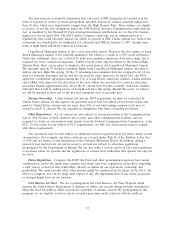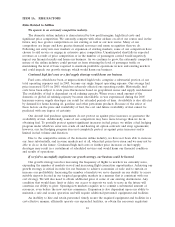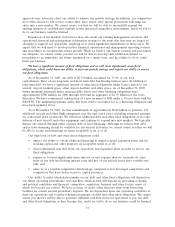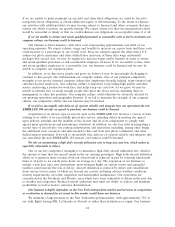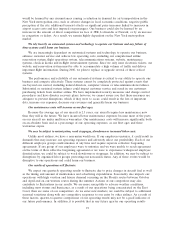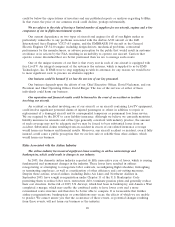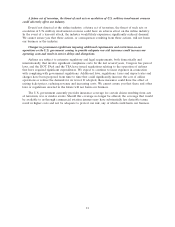JetBlue Airlines 2005 Annual Report Download - page 19
Download and view the complete annual report
Please find page 19 of the 2005 JetBlue Airlines annual report below. You can navigate through the pages in the report by either clicking on the pages listed below, or by using the keyword search tool below to find specific information within the annual report.to get lower fares. In contrast, we have only six basic fares. All of our fares are one-way and never
require an overnight stay. However, our competitors have generally changed their restrictions to match
ours in markets in which they compete with us. Our fares must be purchased at the time of
reservation and are non-refundable, but any booking can be changed or cancelled prior to departure
for only a $30 change fee, or only $25 on our website. Based on published fares at our time of entry,
our advance purchase fares have been 30%to 40%below those existing in markets prior to our entry,
while our ‘‘walk-up’’ fares have been generally been up to 60%to 70%below other major U.S.
airlines’ unrestricted ‘‘full coach’’ fares. As we enter new markets, the difference between our fares
and those prevailing prior to our entry may not be the same magnitude as have existed in the past.
Revenue Management
Revenue management is an integrated set of business processes that provides us with the ability
to understand markets, anticipate customer behavior and respond quickly to opportunities. We use
revenue management in an effort to maximize passenger revenues by flight, by market and across our
entire system while maintaining high load factors.
The number of seats offered at each fare is established through a continual process of forecasting,
optimization and competitive analysis. Generally, past booking history and seasonal trends are used to
forecast anticipated demand. These historical forecasts are combined with current bookings, upcoming
events, competitive pressures and other factors to establish a mix of fares that is designed to maximize
revenue. Like the other major U.S. airlines, we employ a revenue management system with
sophisticated forecasting and optimization models to rapidly perform the economic tradeoffs required
to determine the allocation of the number of seats available at different fares. This ability to
accurately adjust seat allocations based on fluctuating demand patterns allows us to balance loads and
capture more revenue from existing capacity.
While our yields were lower than all of the other major U.S. airlines due to our low fares and
longer average passenger trip length, our load factor of 85.2%for the year ended December 31, 2005
was higher than that of any other major U.S. airline even though we have a policy of not overbooking
our flights. We believe effective revenue management has contributed to our strong financial
performance and is a key to our continued success.
People
We believe that one of the factors differentiating us from our competitors is the high-quality
service provided to our customers by our employees, whom we refer to as crewmembers. Experience
indicates that our customers return not only because we offer low fares, but also because we provide
them with a more enjoyable air travel experience. Hiring the best people and treating them as we
expect our customers to be treated are essential to achieving this goal.
Full-time equivalent employees at December 31, 2005 consisted of 1,253 pilots, 1,836 flight
attendants, 2,253 airport operations personnel, 393 technicians, whom others refer to as mechanics,
820 reservation agents, and 1,771 management and other personnel. At December 31, 2005, we
employed 7,647 full-time and 1,601 part-time employees. Our employees are not unionized.
We enter into individual employment agreements with each of our FAA-licensed employees,
which consist of pilots, dispatchers and technicians. Each employment agreement is for a term of five
years and automatically renews for an additional five-year term unless either the employee or we elect
not to renew it by giving notice at least 90 days before the end of the relevant term. Pursuant to these
agreements, these employees can only be terminated for cause. In the event of a downturn in our
business, we are obligated to pay these employees a guaranteed level of income and to continue their
benefits if they do not obtain other aviation employment. In addition, in the event we are sold to or
consolidate with another company, we must request that the successor company place these employees
on a preferential hiring list. If such employees are not hired by the successor company, in some cases
they will be entitled to a severance payment of up to one year’s salary.
We believe that we carefully select, train and maintain a productive and diverse workforce of
caring, passionate, fun and friendly people who want to provide our customers with the best flying
11


